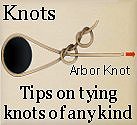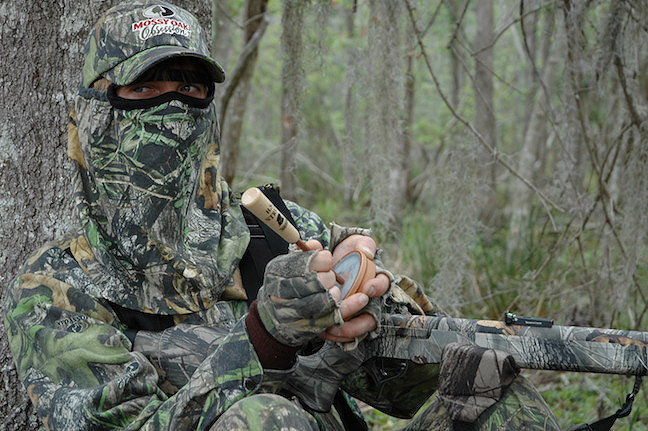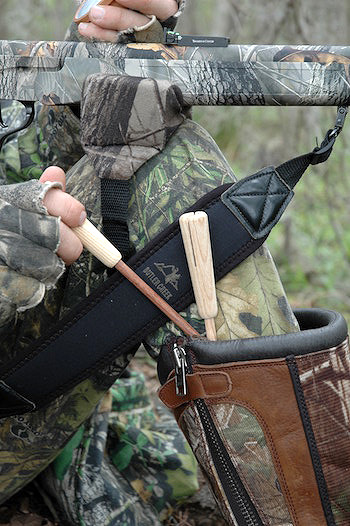The country's premier hunting and fishing daily news
The Backcountry Press
The Backcountry Outdoor News reports the latest hunting & fishing news along with fishing derbies & tournaments
from:
| ||||||
| ||||||
|
© 2010 Backcountry Press Outdoor News - All Rights Reserved
A18-2100
Disclaimer: The views expressed on this site are that of the authors and not necessarily that of The Backcountry Press Outdoor News
Connect With Us
Plan Ahead for a Successful Spring Turkey Season Opener
Submitted by: Backcountry Press Outdoor News
Posted on: 01/30/18
Loading
Spring gobblers don’t just happen. Certainly, there’s always luck. Still, a good plan can make for a great opening day. All it takes is some step-by-step attention to details.
Here is some great advise from M.D. Johnson at gameandfishmag to help you have a successful spring turkey hunt.
PLAN A PATTERNING DAY
This is probably the simplest variable in the whole of the turkey hunting equation: Knowing exactly what your shotgun is going to do each and every time you pull the trigger.
How is it going to pattern with this shot charge and this shot size with this choke tube and at this distance? And how do you determine the answers to these questions? Only by spending time at the range in front of the pattern board.
The end result of these patterning sessions is not only knowledge as it pertains to the performance of your chosen turkey gun, but confidence, both in the ability of that tool to perform as needed, as well as your level of proficiency with the particular tool in question.
But patterning done right takes time, which is the biggest factor in why it’s often overlooked by hunters coast to coast. I pattern my turkey guns annually. Each spring, prior to the opener, I set aside a minimum of half a day at the range. There, the shotguns are inspected, and sights checked and double-checked via the expenditure of ammunition.
Testing the latest-greatest turkey shotshell to hit the streets in 2018? If so, a variety of choke tubes, ranging from modified to Extra Full, are tried at distances ranging from 20 to 40 yards.
Consistency is what I’m looking for; the same pattern over and over and over again. I want to know without doubt what’s going to happen every time I pull the trigger.
Let’s face it, turkey hunting is chock-a-block full of unknowns. If I can eliminate any variable having to do with shotgun performance, leaving me to focus entirely on the many other things that can go wrong during a turkey hunt, so much the better.
REORGANIZE YOUR TURKEY VEST
Large or small. Three pounds, or 30. Kitchen sink, or no. What your turkey vest looks like, what it weighs, and what it contains is immaterial. What does matter is that you can find each and every item you need, when you need it, and solely by feel.
That is, without ever taking your eyes of that on-coming longbeard, you can reach down – slowly, and carefully, of course – and exchange one call for another. Or unholster a different striker.
Or, should it prove necessary, locate a single shotshell, slip it into the chamber, and ready that firearm; all, certainly, without giving a heads-up to that fast-approaching gobbler.
My pre-opener routine in regards to turkey vests hasn’t changed much, if at all, in the past 20 years. Each year, I get a new vest; the aforementioned latest-greatest gobbler-getting garment to ever hit the shelves.
Each year, I take all of my gear out of my usual vest – a bare-bones Cabela’s Deluxe Turkey Vest in Mossy Oak Obsession – and put it into the new vest. And each year, without fail, I wear the new vest exactly one time before, you guessed it, taking everything out of it and putting it all back into the Deluxe. It’s tradition, I reckon.
Before, however, I begin my annual turkey vest back-and-forth, I take every item out of the vest, lay it all out in the middle of the living room floor, and look it over.
Do I need three sets of gloves? Twenty-seven different calls? Fourteen decoy stakes, two flashlights, a satellite phone, and a bottle of Perrier sparkling water? I do not. If you’re like me, you’ll pack your vest for opening day, and then over time, whittle the contents down until you have three shotshells, head net, gloves, two diaphragm calls, a pot call, two strikers, and a bottle of water. Period.
Regardless of your personal vest-related routine, the bottom line is to check your gear, making sure you have what you’re going to need for opening morning. Draft a checklist, and remember, it is far better to have it and not need it, than need it and not have it.
CLIMATE AND CLOTHING
Two final housekeeping items I tend to prior to the opener are the local weather forecast, and subsequently, what I’m going to wear come the pre-dawn opener.
Understandably, the weather not only will dictate what I’m going to wear, but where and, more importantly, how I’m going to hunt on opening day. Throughout much of the country, turkey season comes with cool, if not downright cold mornings, followed by warm afternoons. As such, I’ll typically overdress on the warm side, knowing I can peel out of the outer layers mid-mornings, and either cache them for a return pickup or pack them in the game bag of my vest.
Hooded sweatshirts, for those of you new to turkey hunting, make excellent pillows for those afternoon napping/scouting sessions. For me, then, it’s a combination of the local weather and The Weather Channel, along with a weather app of some nature set on my iPhone; something I can use while afield to stay abreast of any changing conditions.
As those of you who have gotten caught know, rain is one thing. Wind is one thing. Lightning, however, can be a frightening and truly dangerous situation. Best to know in advance what’s coming.
The weather will also translate into how I hunt those first few hours after sunrise. Clear, calm, and cool? I’ll work my roosted bird; no success, and I’m off on a run-and-gun mission, taking my time and moving slowly. Wind? I’m sitting over a couple hen decoys, using a call-and-wait tactic. Rain? Like with wind, I’m biding my time; soft-calling in locations scouting has revealed to be high traffic areas, and waiting to hit those small hidden fields at the first sign of a sunbreak.
Why? Because that’s where the hens will be headed to dry off and pick a choice insect or two. In the spring, where the girls go, boys follow.
SCOUTING, SCOUTING, SCOUTING
How do you fill the days just before the season starts, once you’ve patterned your shotguns, checked your gear, packed your vest, watched The Weather Channel, and laid out your ensemble for that first morning?
You scout. And you scout. And you scout some more.
Generally speaking, scouting is the accumulation of knowledge and information vital to developing an effective hunt strategy. This information can be broken down into three basic components – Where are the birds? Where do they go? And what do I do based on those two factors?













